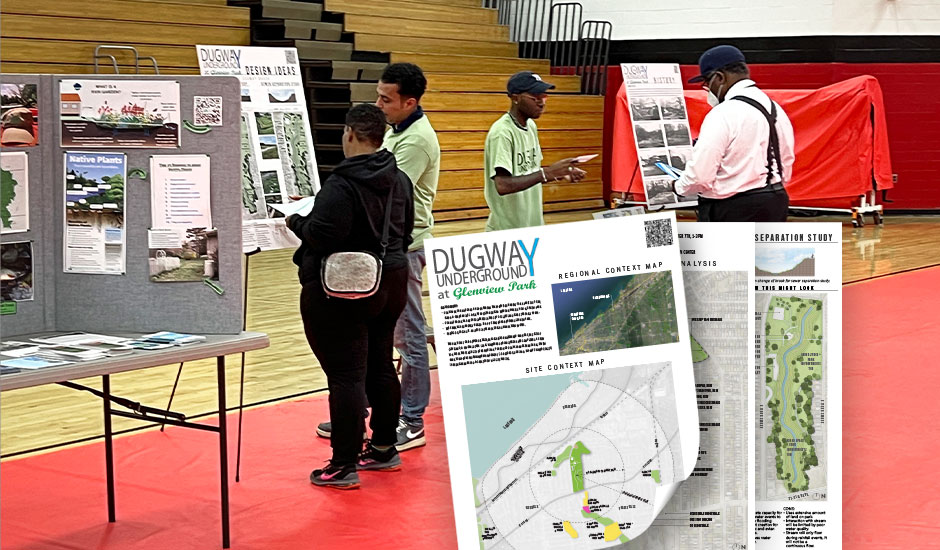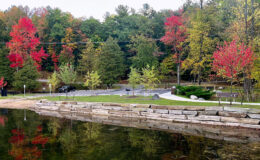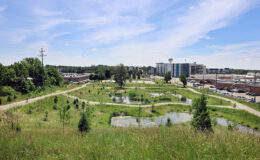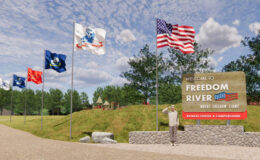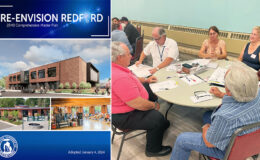The Chagrin River Watershed Partners has initiated a feasibility study to explore the restoration of Dugway Brook in the Glenville neighborhood of Cleveland and the Village of Bratenahl, OH. This study aims to assess whether restoring portions of the brook can significantly enhance stormwater management, reduce flooding risks, and create new habitats for fish and wildlife. Originally an open channel stream, Dugway Brook was culverted in the early 1900s and runs beneath Glenview Park and I-90 where it daylights in Bratenahl and flows into Lake Erie. Funding for this project was provided by a National Fish and Wildlife Foundation grant and many organizations, including the Northeast Ohio Regional Sewer District. Wade Trim is completing the feasibility study and conceptual design for the stream restoration.
Initial data collection has encompassed topographic surveys, bathymetric measurements, and ecological assessments. Two design concepts are being developed: “daylighting” the brook— removing the culvert and restoring the original stream route—and separating stormwater from the sanitary sewer system to create a new stream at current ground level. Both alternatives could create new habitats for fish and wildlife and reduce surface flooding in the park area, thus minimizing the potential for basement sewer backups in surrounding neighborhoods during wet weather events. Design concepts are also being assessed for accommodating increased rainfall and lake levels due to climate change to improve community resiliency.
Recognizing the importance of potential impacts and benefits to area residents, we are facilitating a comprehensive engagement initiative to gather and incorporate community feedback. Activities include “field trips” with student groups, visits to local community centers, and town hall meetings. These efforts aim to understand current flooding issues, how Glenview Park is utilized, and residents’ broader needs and goals for the park and their neighborhoods. A critical component of our engagement strategy is clear communication and education regarding how the initial designs may affect the community, both during and after construction.
Community feedback and goals will inform the feasibility study and be balanced against the project’s goals of wildlife habitat creation, climate change resiliency, flood control, and improved public space. The financial viability of the project will also be evaluated to identify potential grants and funding sources that could support implementation.

